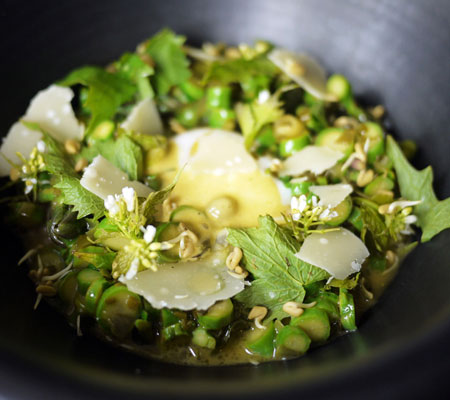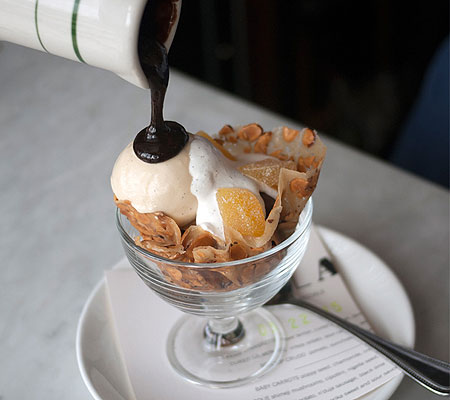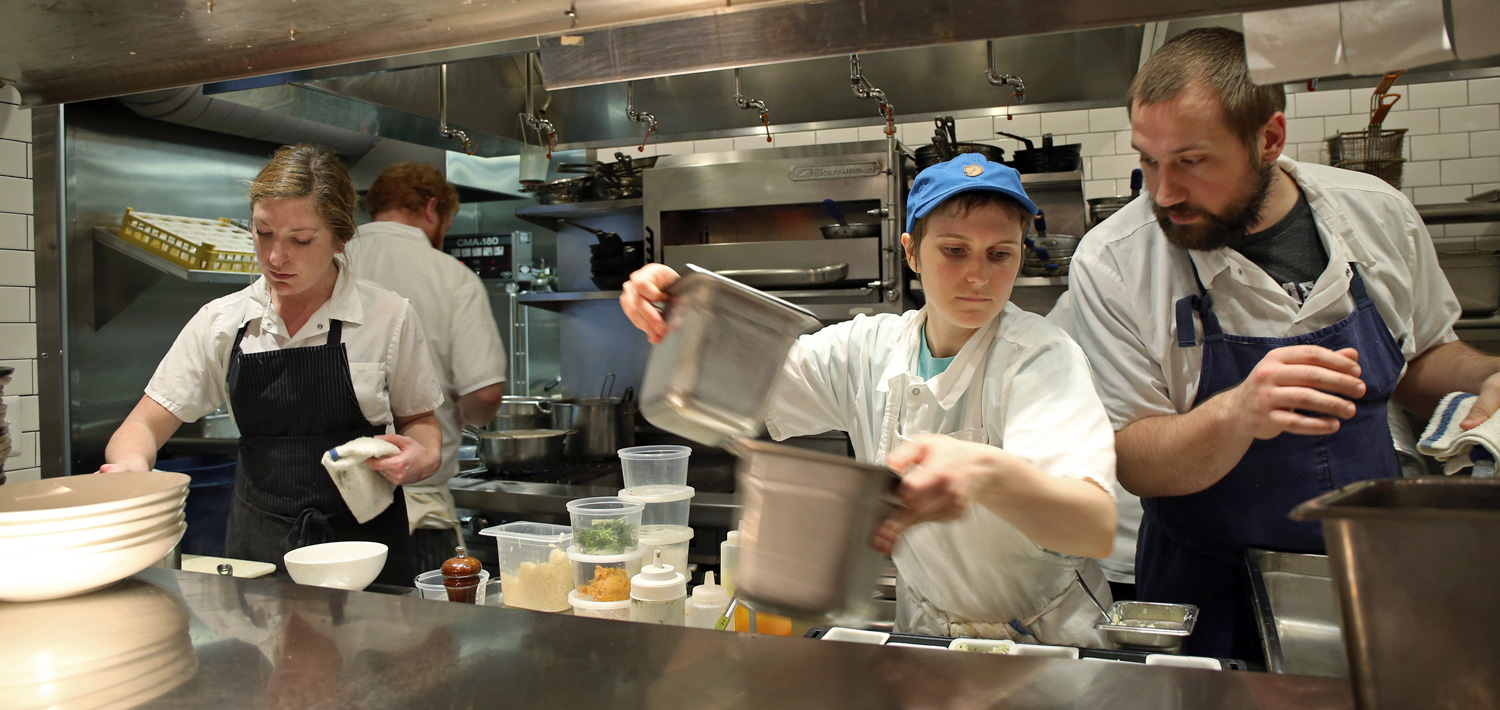Photo: John J. Kim/Chicago Tribune
Say the words “farm dinner” and your mind probably takes you somewhere pastoral, where plates showcase vegetables on the brink of seasonality from a nearby farm, but that's not necessarily the case with Lula Cafe’s three-course, $44 Monday night farm dinner series.
Though it started as a way to use up chef/owner Jason Hammel’s Saturday farmers’ market impulse buys, this slightly misleadingly named dinner series has morphed into something of a live journal, charting Lula’s creative progression over the past 15 years. Along the way, it’s become a neighborhood favorite.
“I’ve thought about changing the name,” Hammel says with a sigh. “It’s not like everything comes from a specific farm. But for people who understand it, it’s become something familiar and beloved, so I decided I don’t need to fix it. It’s sort of imperfect, but its genesis has been very honest and real.”
The farm dinner started around early 2001, in a nod to the nightly changing, market-driven coursed menus offered at Alice Waters’ 45-year-old farm-to-table restaurant Chez Panisse.
Advertisement
“We wanted to do something similar to Chez Panisse the Monday after we’d been to the market, because I was always buying stuff we didn’t need,” Hammel says. “We’d have the menu all done, everything’s fine, then I’d see some special pepper or radicchio and buy it. So we came up with a menu based on whatever those things were.”
Nearly every Monday night since then, Hammel’s close-knit kitchen team has churned out a unique appetizer, entree, and dessert based on whatever’s happened to inspire them at the moment—be it ingredients just coming into season or new products and techniques. Brainstorming for the farm dinner typically starts on Thursday or Friday, when they find out what might be coming to the market. On Saturday they shop, write menus, and start testing. By Sunday evening, they have more or less settled on the three dishes, which they then tinker with till about 6 p.m. Monday, when guests start arriving.
On a recent week, Hammel and chef de cuisine Sarah Rinkavage’s post-market free association began with a plan to pair their red cabbage and pear haul with rich cheese and some elderberry jam that had been in the pantry for awhile.
“We’ll toss the cabbage with the jam, then put it on the charcoal fire which will caramelize it,” Hammel wrote. The cabbage would be followed by goat from Catalpa Grove Farm with a broth made from annatto seed “to match the red colors of the first course.” For dessert, a simple apple pavé with ginger ice cream and candied walnuts would round out the fall-fruits theme.


Dishes never repeat on farm dinner menus. This wasn’t a conscious decision at first, Hammel says. It was more an unofficial promise to regulars and industry folk that they could expect something new every week, since back then Lula was one of few places open on Mondays.
One of those regulars is Abraham Conlon, chef/owner of nearby Macanese hotspot Fat Rice.
“Lula is kind of your quintessential neighborhood spot, but it’s also great for industry people because they always offer something new and different,” Conlon says. “I love being able to go and get something that is inventive and seasonal and vegetable-focused. But I also like it in the way that he empowers his chefs and sous chefs to be creative and put something new out there.”
Now some 2,080 farm dinner dishes later—and counting—this weekly ritual has become far more than a way to surprise diners and keep the chefs on their toes. Every dish on the regular dinner menu was first conceived as a farm dinner course, making this weekly series a big part of the creative engine behind this Logan Square mainstay.
“It helps us organize our creative lives," Hammel says. “It’s pretty demanding to come up with new dishes every week, but it’s also about how we organize and think through things together and train each other on new things every week. That’s an important part of my life, making sure people are learning and experiencing new things in their jobs.”



